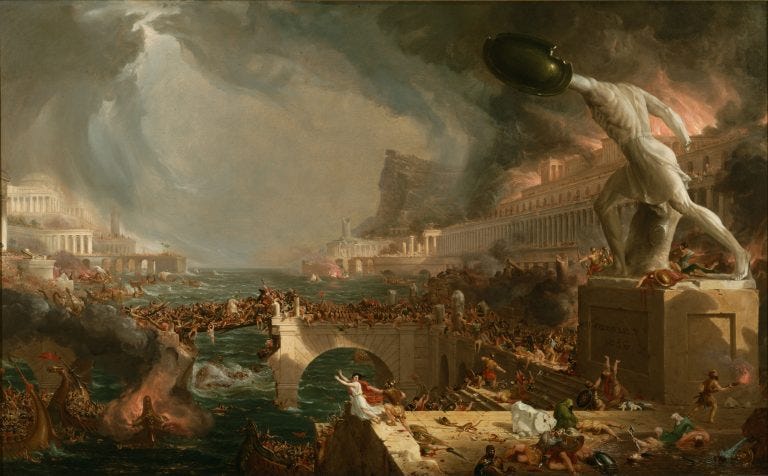
From Hilary White at The Sacred Images Project:
ShareI may have forgotten to cover it because in reality it was a bit of a non-event. Thomas Cole’s fanciful academic painting here shows a cataclysmic, all-consuming disaster: temples burning, mobs rioting, statues toppling, ships sinking, bodies strewn across a collapsing cityscape, which is more or less how we’ve been taught to think of it. But this is not what happened in Rome in 476. The last western emperor, Romulus Augustulus, was quietly deposed and sent off to retirement. There was no sack in 476, no flames, no tidal wave of chaotic destruction. Unfortunately for romantic painters, the historical reality was gradual, bureaucratic and anticlimactic.
In 476 AD, the boy-emperor Romulus Augustulus1 was deposed, after reigning only about ten months, by the barbarian general Odoacer, and that’s the conventional date for the “fall” of the Western Roman Empire. But what actually fell was the last remaining shred of imperial authority in the West. In the east, emperors carried on in Constantinople for another thousand years. In the West, daily life didn’t suddenly stop, though it certainly changed. The Church remained standing and bishops and clerics stepped into civic leadership roles as senatorial power faded. Many Roman churches from this period are still in use, and had already provided shelter to the city’s population during the sack of 410 by Alaric.
What really collapsed was centralised administration and senatorial power. It hardly needs saying that Odoacer didn’t overthrow the Roman Empire at its peak of peace, power, and prosperity. By 476, the Western Empire was already a shadow of its former self; militarily overstretched, economically broken, politically fragmented and increasingly reliant on barbarian generals to do the actual ruling. (Read more.)

















No comments:
Post a Comment